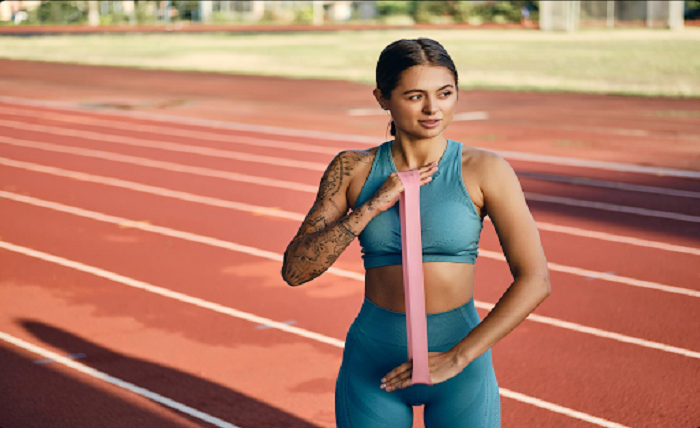Sport in India has always been surrounded by tradition, but in recent times, something has been changing. Belonging to the girls in sports, they are not only gaining medals but also exposure and landing on the screen, and even endorsement deals. That change did not occur in a day. It has been contributed largely by Bollywood and advertising of big brands, which have contributed to shaping people’s perceptions of these women.
What Visibility Brings—And What It Misses
The more we see female athletes, the more we believe in their place in sport. That’s the upside. But there’s a flip side, too. Visibility doesn’t always come with full control. Bollywood, with its polished scripts, often simplifies complex realities into stories that sell. Brands do something similar—crafting a version of an athlete that fits the campaign, not always the truth. And in the middle of this growing attention is another rising space—online betting in India.
The more people watch and follow sports, the more industries related to sports grow. Female athletes, now heavily featured in headlines, become part of the larger ecosystem, whether they directly engage or not. Their fame feeds interest, and that interest fuels sectors beyond sport itself.
Consider such movies as Mary Kom or Shabaash Mithu. Such narratives roused the fact of women’s boxing and women’s cricket, but they also composed elements of cinematics that are lacking in reality. They contributed to brightening expectations. When a person becomes a public figure, they stop being an athlete; they are the name, image, and even the product.
What Brands Want—and What Athletes Have to Balance
Companies buying the face of an athlete to be the face of a campaign are not just buying a face; they are buying a story. The emphasis is usually put on such aspects as strength, discipline, and humility. There is, however, an unspoken boundary which must not be crossed: be powerful, but not too loud. Be highly motivated, and yet not threatening. Many female athletes have gotten used to walking that tightrope.
In many campaigns, the image built around the athlete feels rehearsed. While it shows progress—seeing women featured in prime-time ads is still new for Indian sports—it also limits the range of who gets seen and how.
Here’s what most brand campaigns tend to expect from female athletes:
- Keep messaging neutral and widely appealing
- Be “inspiring” without being political or controversial
- Highlight effort and humility above aggression or dominance
- Fit into familiar roles—like “fighter,” “daughter,” or “national pride”
- Maintain a polished look, even in raw or emotional moments
That checklist works for marketing, but it doesn’t always reflect the full human being behind the camera. Some athletes push back against this. Others stay quiet and play along. Either way, the image that reaches the audience is only part of the picture. The rise of films about sportswomen and ad campaigns built around real players has pulled them into the mainstream. They’re no longer just a face on a medal tally—they’re characters in movies, the stars of billboards, and role models followed by millions. But while this exposure is powerful, it’s also curated. And what the public sees doesn’t always match the full story.

From Court to Camera: The Media Mold
Here’s how some of India’s top female athletes have been shaped by media and brand work:
| Athlete | Sport | Advertising Style | Bollywood Portrayal |
| PV Sindhu | Badminton | Elegant, high-tech focus | No biopic yet |
| Mary Kom | Boxing | Energetic, health-driven | Priyanka Chopra in Mary Kom |
| Mithali Raj | Cricket | Reserved, leadership tone | Taapsee Pannu in Shabaash Mithu |
| Hima Das | Athletics | Youthful, down-to-earth | Not yet portrayed |
What we see here is a mix of authentic identity and marketing direction. Each campaign amplifies one aspect of the athlete’s life and personality. It works—audiences remember them, and sponsors return. But there’s always a gap between brand storytelling and lived experience.
More Fame, More Eyes, More Pressure
With attention comes pressure. The public isn’t just watching their performance anymore—they’re watching their behavior, their clothes, even their friendships. It’s a heavy load. Many of these women come from small towns with limited media training or support teams. Going from national athlete to national icon can feel like being thrown into a fire.
The media doesn’t help much. Most coverage sticks to highlight reels or emotional wins. What’s missing? The difficult parts—like dealing with injuries, fighting for fair pay, or speaking up without getting punished for it. These things rarely fit into a TV spot or film plot.
Still, the benefits of this visibility are real. Better recognition leads to stronger funding, wider support, and new chances outside sport, like hosting, speaking, or even launching their ventures. It also sets examples for the next generation of girls watching from villages, classrooms, or neighborhood fields.
The Image Isn’t Everything—But It Still Matters
There’s no way around it: Bollywood and advertising help female athletes get seen. Even if it’s filtered or cleaned up for the screen, that visibility helps shift what’s normal in Indian society. A girl who sees a boxer in a TV ad or a runner on the big screen starts to think, That could be me. It is not important whether one will be exposed or not; what is important now is whether this will be exposed at the expense of the truth. These are women who have made space to be in the limelight. The question isn’t whether image-building is helpful. It is. The question is who gets to decide what that image looks like—and whether it makes room for the full story, not just the polished one.
